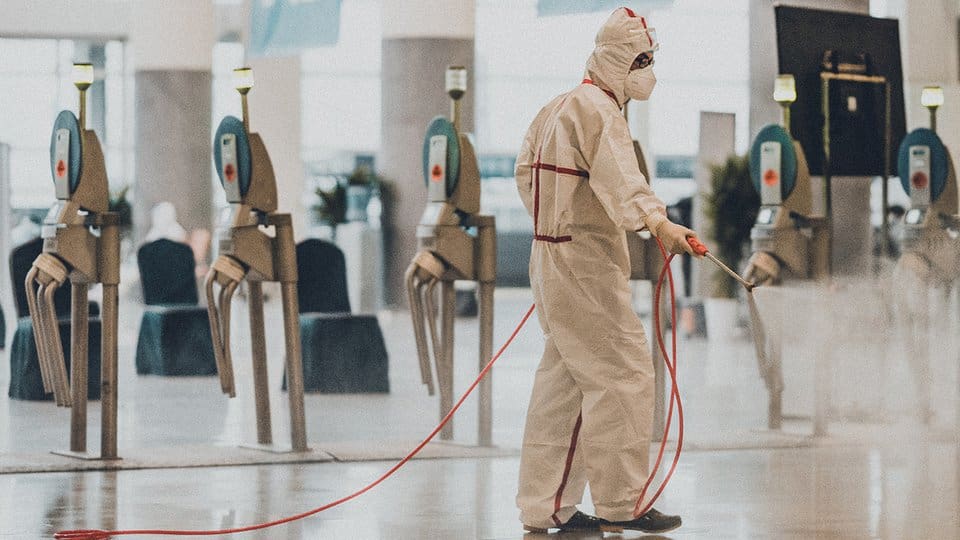While the health crisis continues to stabilise in China, inhabitants of the world’s largest economy are only just beginning to wrap their heads around COVID-19’s impact on life as they know it. What lessons can the US can learn from China, and how can brands adapt to this new normal?

While the health crisis continues to stabilise in China, inhabitants of the world’s largest economy are only just beginning to wrap their heads around COVID-19’s impact on life as they know it. What lessons can the US can learn from China, and how can brands adapt to this new normal?
Over the past several weeks, it’s been interesting to realise that the scene I saw play out in China has since been put on rewind and replayed in the US. As someone who lives in the US but whose work focuses on the China market, I am seeing it all play out so differently in these two major global markets with comparable geographies and large populations. Why is this so?
Key Reasons China is Making a Swifter Recovery
Digital and Technology-driven Infrastructure
At the base of it all is China’s sophisticated logistics networks and operations (watch Alibaba’s Cainiao warehouse operate, 2017); widespread, accessible mobile networks with affordable 5G cellular access; and high digital penetration (mainly mobile) among consumers in rural to urban cities. Data privacy arguments aside, the invested infrastructure resulted in critical real-time data that enabled the tracking, management, and containment of the virus spread as it was happening. At the same time, this infrastructure also meant that day-to-day needs continued to be met (read: no lack of/ fight over toilet rolls in stores), maintaining some semblance of normalcy despite the home quarantine situation.
Government
In times like these, we are sheep that require herding with a clear directive and swift, unified action. Despite early missteps and personal political opinions aside, China’s government was organised, resourceful, and informed in mobilising a nation of nearly 1.5 billion citizens into quarantine life in a matter of weeks. That is no small feat. The existing infrastructure further empowered the Chinese government in implementing swift action at scale.
Consumer Behavior
The digital transformation of China has been underway for years, so consumers have been living in a deeply digital world already. As a result, the crisis in China did not challenge daily life the same way it is doing so in the US – especially in places where accessibility to resources is insufficient and inadequate. While life was undeniably disrupted, governmental actions, coupled with the existing digitally-driven infrastructure simply amplified the reliance of Chinese citizens on digital technologies.
What is The State of China Now?
China has, for a few weeks now, reopened the majority of public spaces including stores and malls, restaurants and coffee shops, as well as office buildings. Though not everything has reopened. (and in some cases have reclosed), China has already passed the initial wave and managed to resume life – albeit in the form of a more cautious, new ‘normal’. Brands have reactivated and continue to invest in the market. More recently, many of them celebrated Queen’s Day 女王节 (International Women’s Day) on March 8, and consumers responded with an uptick in searches and spending especially in the relevant cosmetics and skincare categories.
While we’re still in the thick of it, they are on the road to recovery. Turning to China for insight into what recovery might look like is not a crystal ball into the future, but it certainly provides valuable insights people and brands should not ignore.
What’s the Takeaway for Brands?
Brands need to keep operating. Remaining in a state of limbo is worse than any of the other available options. While turning to China may not necessarily allow brands to recoup and equalise losses in markets that are currently at a standstill, it is presently the only market with enough capacity to maintain operations, and enough potential to make a significant impact on bottom lines.
Digitally speaking, China has been, and continues to be, the market most equipped to turn digital ideas and concepts into reality. I love the idea that everyone in the US is looking to livestreaming as a new alternative. But in China, this is old news. Consumer adoption typically faces less friction, and options span a wide range of platforms. Then there is the added bonus of broadband connections in the country that can actually handle such streaming activities en masse. I struggle right now to upload a screenshot, much less watch a smooth IGTV session, as I toggle between my Wi-Fi and hotspotting on Verizon Wireless.
Agility is normal in China. Change can happen in an instant, and in operating any business there, you have to know how to be agile and make that your normal mode of operation. More than ever, are we learning around the world what it’s like to quickly switch operations from an offline or mixed model to online only, while trying to weather a crisis with no defined pathway. However, as China faces a second wave before we’ve even realised or finished our first, their management and recovery will still be ahead of us both in time and in performance due to the aforementioned reasons. There is much to be practiced and learned from the China market, that businesses can carry over to the future.
To find out more about how COVID-19 has inspired the digital transformation of everyday life in China, save a seat at the upcoming DLG Webinar Series #1: COVID-19 A Time of Disruption and Change now. Only 100 spots available.
/Edited on 21 April
Highlights from the webinar:










